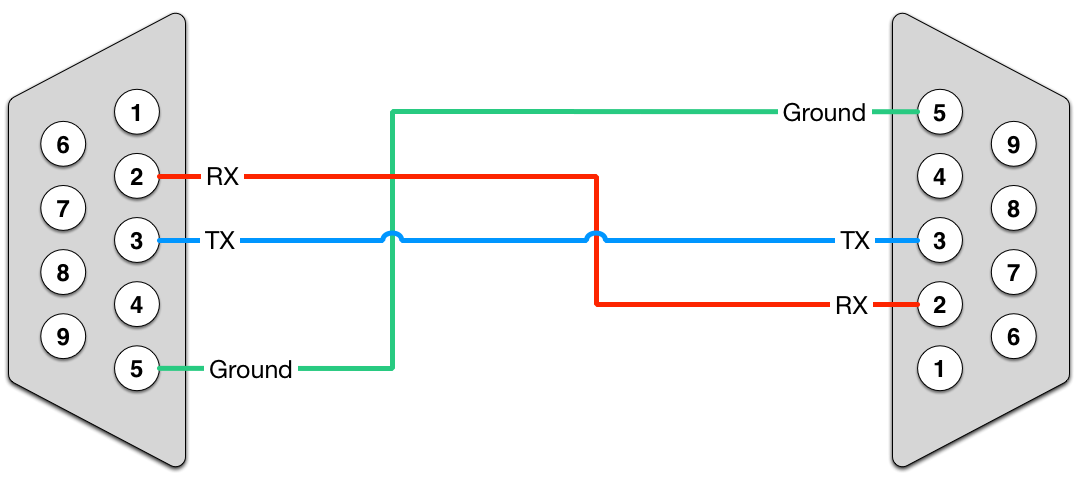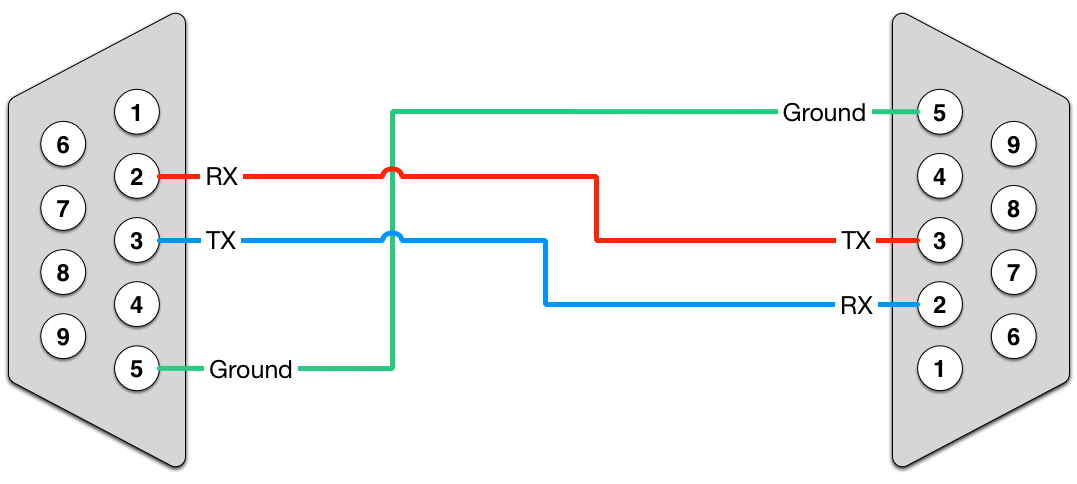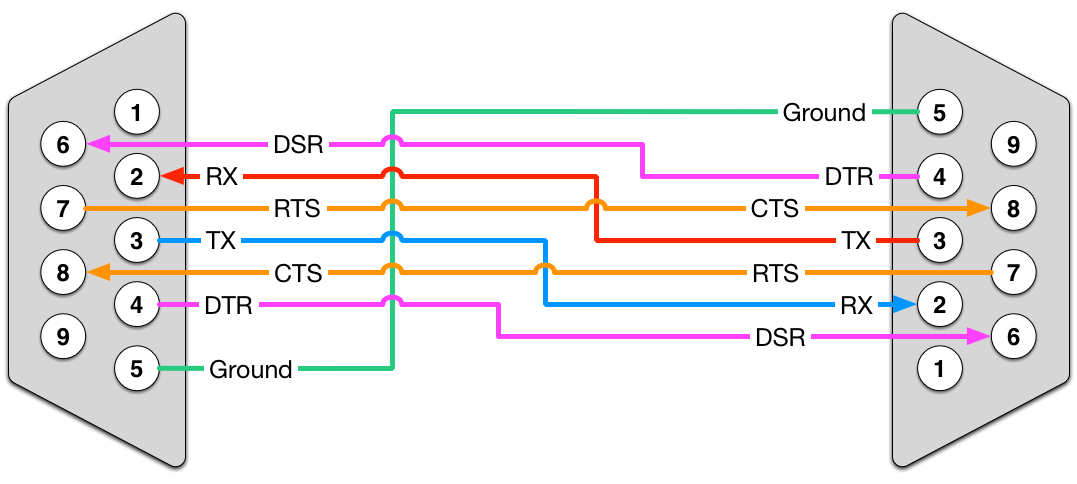The RS-232 specification defines two types of serial devices, DTE and DCE. DTE normally refers to the serial port on a PC or terminal, while DCE refers to a modem or other type of communications device.
Depending on the type of device on each end of the line, you either need a straight-through or a null-modem ("crossover") cable in order to communicate.

A straight-through or "one to one" cable is used to connect a DTE device (PC) to a DCE device (modem or other communications device). The transmit and receive lines are not cross-connected in this case, hence the name.
The StarTech MXT100FF is an example of a straight-through cable.


A Null Modem or "crossover" cable is used to connect to DTE devices together. For this to work, the Transmit (TxD) pin of one device needs to be connected to the Receive (RxD) pin of the other device, and vice versa.
To enable handshaking between the two devices, the Request to Send (RTS) pin of one device must be connected to the Clear to Send (CTS) pin of the other device, and the Data Set Ready (DSR) pin is connected to the Data Terminal Ready (DTR) pin of the other.
Null modem adapters can also be used at the end of a straight-through serial cable to cross the lines. The StarTech SCNM9FF is an example of a null modem cable.